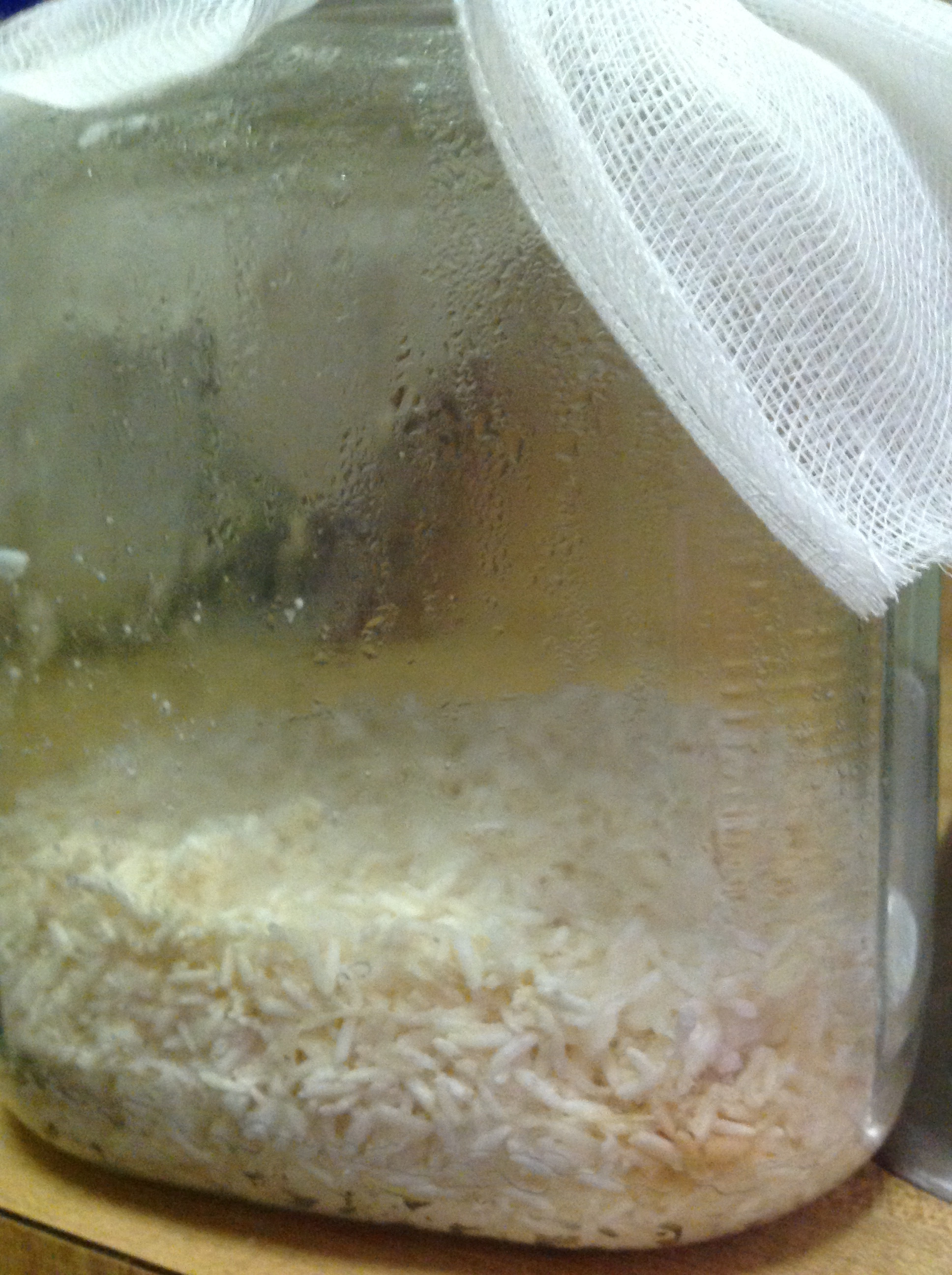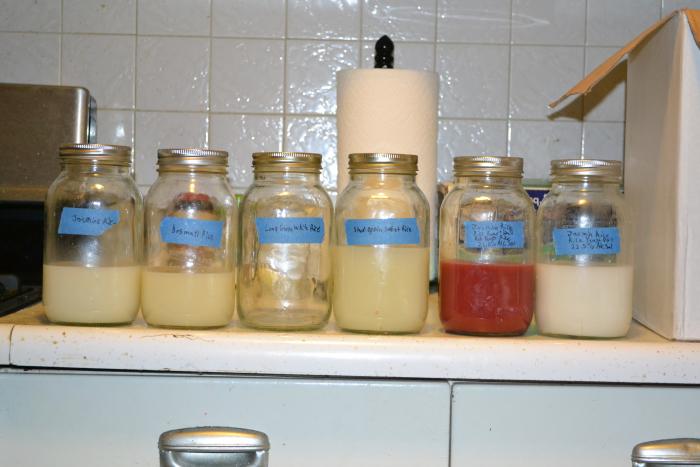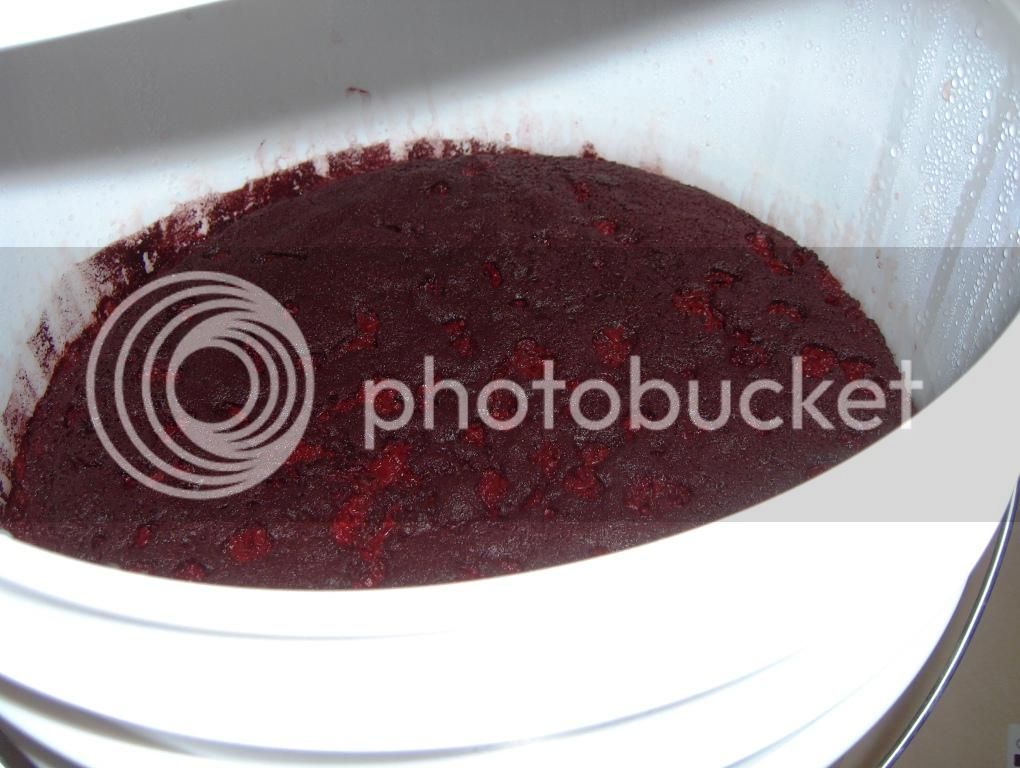Mr_Sunshine
Member
- Joined
- Sep 21, 2013
- Messages
- 6
- Reaction score
- 1
It's no wonder I can't find any more of these jars at Wal-Mart, everyone on here night them all up!



Mr_Sunshine said:It's no wonder I can't find any more of these jars at Wal-Mart, everyone on here night them all up!



Congratulations. Please tell me that's not regular long grain white rice.I'm making my first batch!...
Congrats on your first batch... If you have a bag of balls, go for it and make a full batch. Make yourself 6 cups of Thai Jasmine rice and fill that thing up. You won't regret it.
...
As for other experiments, I'm either going to have to build an extension on the house or rent a one bedroom apartment for my experiments (or my spouse) just to keep the peace. There are gallon batches with airlocks and mason jars everywhere. Friends look around and say "I hope you don't get raided!"
I love this hobby!!!
Congratulations. Please tell me that's not regular long grain white rice.
What isle is the yeast usually in at the Asian market?
...After doing the ridiculous amount of math, I realized that it still breaks down to a 1:1.3 ratio by volume...Huh.
Hmm, I was going to dilute the red rice wine I had in my fridge for refermentation. The thing is, I don't think I need to. I took a gravity reading and it came out to 1.031 after temperature correction. That means that if it ferments to 1.0 I'm looking at an increase in the alcohol content of 4.1%. If we assume that the original rice wine had an ABV of 15-17% then the distillers yeast should have a high enough alcohol tolerance to consume the rest of the sugar without any extra water.
The distillers yeast is supposed to be alcohol tolerant up to 23%, though in practical terms it doesn't usually go over 20%. On the other hand, if it's already around 19%, it's not going to do much. I can always add water later though.
So, what I did instead was add 1/2 tsp of yeast nutrient, 1/4 tsp yeast energizer, and 1/2 tsp of dry distillers yeast. I mixed that in the the three quarts of leftover red rice wine I had in the fridge. I had another quart I didn't see shoved into the back of the fridge. We shall see how things go with it now.
Gravity has remained stable at 1.024. I diluted the batch with 1 quart of water. The new gravity reading was 1.018.I just took a new gravity reading on the red rice wine I added the distillers yeast to. It's been 10 days or so, and the gravity dropped from 1.031 to 1.024. So a 0.9% increase in alcohol content. I'll give it another couple of weeks and take another reading.



Lol, I'll link back.
Nobody has anything to post about rice wine today?
sorry guys i meant to say do you think i can get away from the off tastes from the high liquid to rice ratioo
1 do you think by putting the yeast in early there is a chance i can get away from the high liquid to rice ratio?
ok guys here is a experiment i put together 2 days ago. 8 cups of thai jasmine rice 4 cups water 4 cups apple cider. used the rest of the gallon of cider in a 2 gallon glass cookie jar put the rice in one large scoop at a time and stirred it in. this left about 3 fingers from the top then saw 3 bananas on the counter and pilled mashed them to a paste put them in mixed it up and let cool. i then put some yeast on top red star pasteur champagne and let it ride for about 1.5-2 hours then crushed up 2 large yeast balls and about 4 tbl spoons of ryr mixed it in. this took off very quick less then a day i saw liquid. in 1.5 days there 4 fingers of liquid with some rice on top and some on the bottom noticed the stuff on top looked a little more solid so i mixed it in. tried what was on the spoon it was sweet but the bananas overpowered everything. a few questions
1 do you think by putting the yeast in early there is a chance i can get away from the high liquid to rice ratio?
2 i understand alot of the liquid on the bottom my be apple cider but the rice soaked this all up at first. could this have caused the fermintation to happen everywhere else faster?
I believe that's due to the growth of something in the rice wine that produces an acid. A previous experiment I ran indicated that high alcohol levels in the solution would inhibit that growth, even with the rice fully submerged in liquid. With the high liquid, sugar, and additional yeast, it is possible you will get enough alcohol fast enough that the bug producing the acid will be inhibited before it gets going. It's also possible that it will love the sugar and just go nuts with acid production. I don't think we know exactly what it is that produces the acid at this point.mmmm not to much of a scientific guy more of a lets slap this together and see what happens. mostly i pitched the yeast packet early to see if that might get rid of the off flavors people are getting from the higher then 1.5 water ratio.
I believe that's due to the growth of something in the rice wine that produces an acid. A previous experiment I ran indicated that high alcohol levels in the solution would inhibit that growth, even with the rice fully submerged in liquid. With the high liquid, sugar, and additional yeast, it is possible you will get enough alcohol fast enough that the bug producing the acid will be inhibited before it gets going. It's also possible that it will love the sugar and just go nuts with acid production. I don't think we know exactly what it is that produces the acid at this point.
It should be interesting to see what happens.
True. I've run across two different methods for controlling the acid level. The first is by limiting the water, which is where the amount of water used to cook the rice becomes very important. The second was by taking the rice wine through a series of temperature swings.Talking with that Chinese friend, he said they don't make rice wine in the summer months because it makes it sour. So apparently there's something going on with temps..
Leadgolem said:True. I've run across two different methods for controlling the acid level. The first is by limiting the water, which is where the amount of water used to cook the rice becomes very important. The second was by taking the rice wine through a series of temperature swings. You also need a little warmth to get good starch conversion. First warm, then a long sit at lower temps, then warm again for a little while, then back to cool, lather rinse repeat. That's pretty much the sake method. Along with phased introduction of additional starch and water. The benefit of controlling the temp is you can use more water and yield more wine from the same amount of input starch. The benefit of controlling the water is that you don't have to worry nearly as much about temperature. RYR also seems to inhibit whatever bug it is that produces the acid.
Not a problem. It's not like we are in competing businesses. Sharing data helps everybody.I have to give you props, your work throughout the various experiments you have done has been been very helpful to me. Thanks for sharing your findings!
i would think the addition of apple cider will dilute the sugars from the rice wine even though there is sugars in the cider i do not think there is anything close to the fermented rice.The rice wine we have been making is sweet because there's so much left-over sugar after the yeast gets the alc % up to where it becomes dormant and the starches continue to get broken down.
So by adding something sweet, you'll just end up with even more sugar left over. After sitting a bit and clearing out, the batch I made with dried mango is really .. really... REALLY sweet. Almost too sweet for me to drink. It's like a cheap Moscoto wine sweet. That prompted me to try a batch with added water at 1.3 times the weight of the rice. I steamed the rice with 1.5 cups water per cup of rice and cooked up 10 pounds, then added 13 pounds of water (Along with a package of RYR and 10 yeast balls) It's been bubbling tremendously out of the air lock. I took a peek this morning, and there's no traces of mold, just a cake on top full of little CO2 escape holes. All the rice was covered by a LOT of water when I first put the lid on this.

What I'm trying to do, is find the point where the rice starch is fully broken down and the sugar is fully consumed by the yeast. Too much water, and you don't get the alcohol potential you could have had. Too little water, and you leave residual sugar behind that could have been made into alcohol. When/if that happens, as per the Cinese recipe I'm following, you should have a wine with no sweetness at all and a high alcohol volume. Imagine a shot of 80 proof whiskey that you've diluted exactly in half with water. That's the taste I get from my Chinese friend's rice wine. If that point is found, and if NO sugar left is not what you desire, then maybe you can play with the amount of added water between none and 1.3 to come up with something flavored to your liking?
If you like it how it is, then "if it ain't broke, don't fix it." I like it how it is, but I also liked his rice wine.
Please keep us updated. I'm toying with the idea of doing a water addition experiment. Though I'm still open to suggestions.
Actually I was thinking of doing the experiment somewhat like what you are doing. Only with more levels of water additions.very good im interested in making it a lot less sweet the added bonus of making more alcohol would kick azz. ill pull some to the side if this works and add some water to see what happens
True, but rice cookers that big are really expensive.kinda makes you wish you could make 20 pounds of rice at once. but none the less i gotta give you and many others on this thread thanks for the insane amount of sharing tips and tricks.


Enter your email address to join: